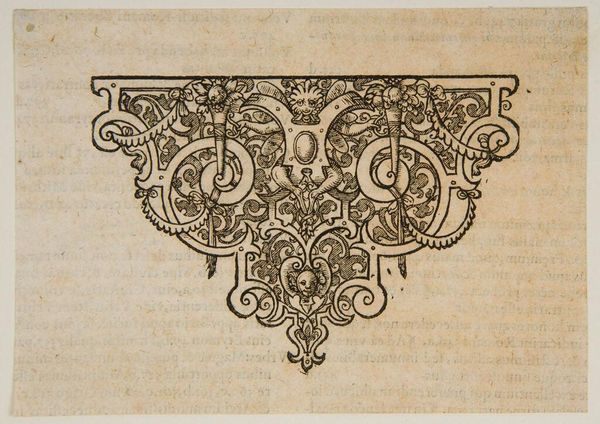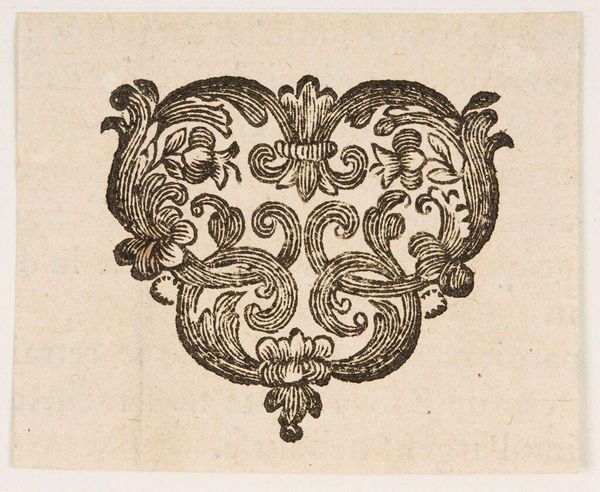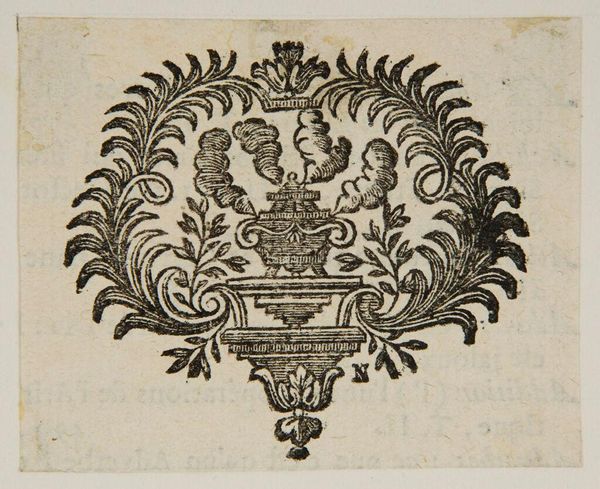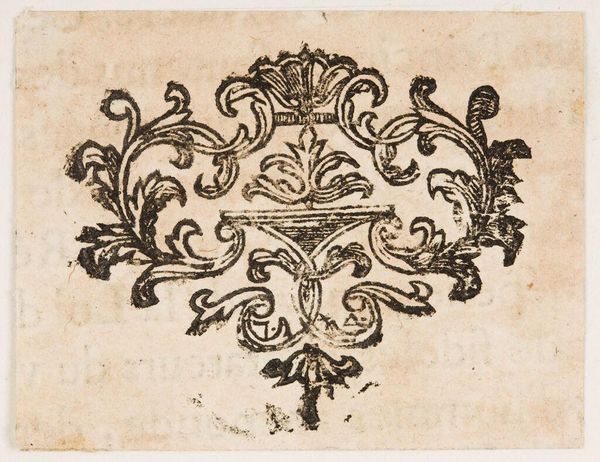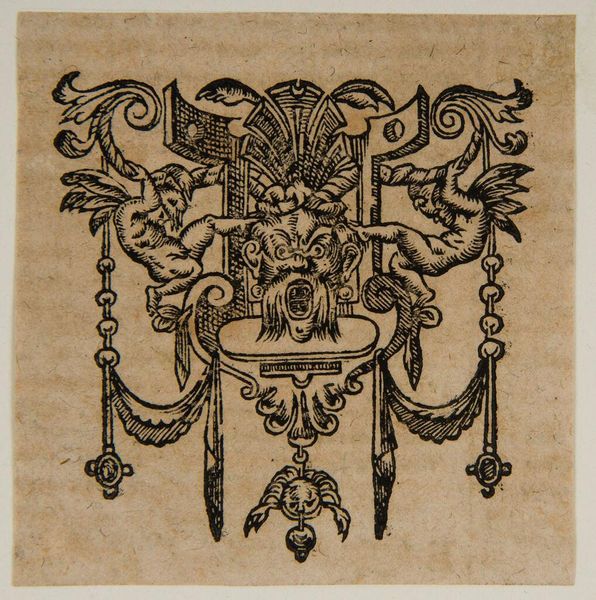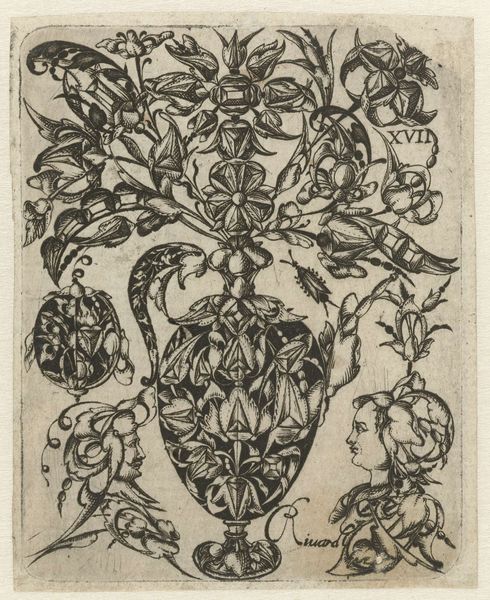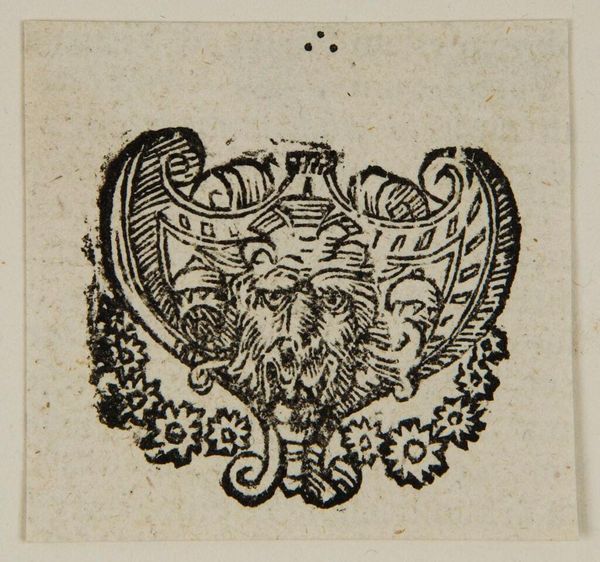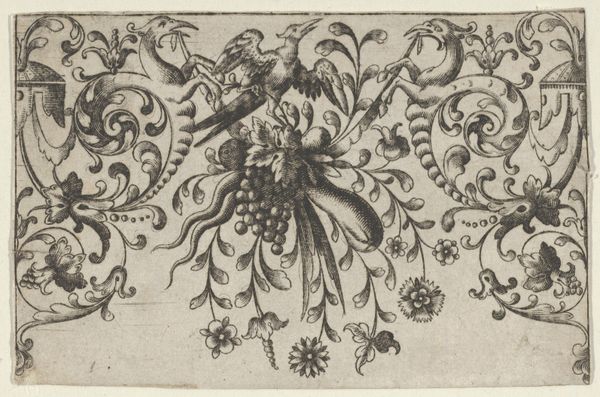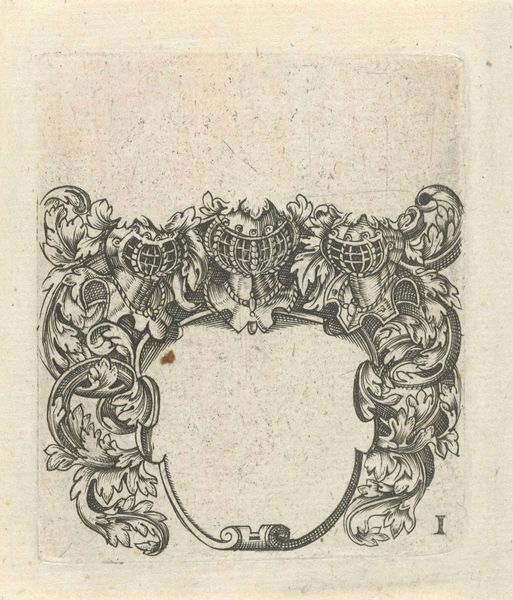
Copyright: CC0 1.0
Curator: What a curious piece! We have here an anonymous work titled "Tail-piece" from the Harvard Art Museums. It’s an intriguing example of early printmaking. Editor: The first thing that strikes me is the almost grotesque quality of the central face juxtaposed with the playful cherubic figures above. There’s a tension here. Curator: Absolutely, it speaks to the decorative conventions in early printed books, often used to fill blank spaces at the end of chapters or works. The cherubs and overflowing cornucopias are classical motifs, symbols of abundance and prosperity. Editor: But that face…it feels almost like a Green Man figure, a pagan symbol of nature, subverting the Christian symbolism of the cherubs. Is this a subtle commentary on the established order? Curator: That’s a fascinating reading! It's a reminder of the complex social and intellectual landscape in which these images were created and consumed. Perhaps a nod to the blending of pagan and Christian traditions? Editor: Exactly. Seeing this piece makes me think about the ongoing dialogue between art history and contemporary theory, particularly the ways we can re-evaluate seemingly minor works for their deeper cultural resonance. Curator: It invites us to look at these printed images not just as decoration, but as potentially subversive voices within their own time.
Comments
No comments
Be the first to comment and join the conversation on the ultimate creative platform.

